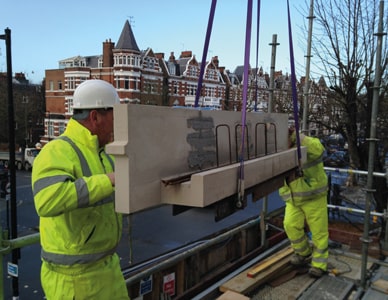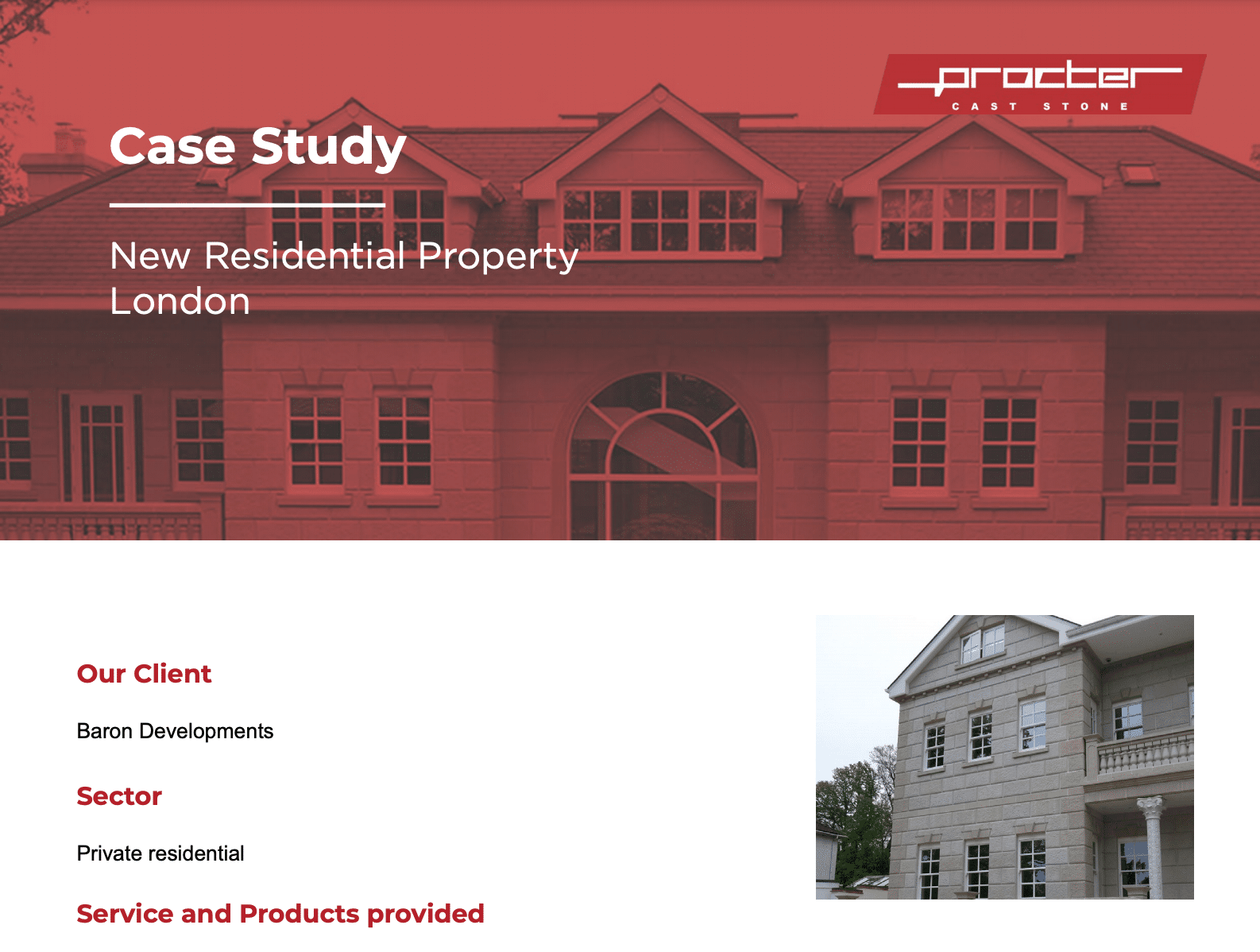10 Tips for saving money on cast stone
The Director of Procter Cast Stone provides ten tips for saving money when purchasing cast stone – but without compromising on quality.
Cast stone offers an extremely cost-effective yet visually near-indistinguishable alternative to quarried stone for new projects as well as refurbishments, conversions and extensions to period properties, whether the requirement is for one-offs or large quantities. However, the price of cast stone can vary significantly from one supplier to another, largely due to the quality. Standard sized ashlar blocks need to comply with BS EN 771-5 and be CE marked to the Construction Products Regulation (CPR). Architects, specifiers and quantity surveyors are under pressure to reduce cost, so this present ’10 tips’ article suggests ways in which costs can be saved without compromising quality and resorting to low-cost manufacturers that might deliver non-standards-compliant products.
1. Use standard products
Manufacturers such as Procter Cast Stone offer extensive ranges of standard products such as heads, cills, string course, quoins, copings and pier caps that are manufactured in large volumes and held in stock. Clearly, there will be more cost-effective than similar non-standard items. Procter also offers a made-to-order standard range for which the moulds have already been manufactured, so these products can be delivered with short lead times and, again, at a lower cost than bespoke products. These made-to-order standard products include ashlar walling, steps, porticos, arches, canopies, pedestals, columns, balustrading, spheres, plinths, gable vents, corbels, cornice, mullions, door jambs, bullseyes, and name and date plaques. If standard products are not suitable for a particular project, consideration should be given to specifying a mixture of standard and non-standard products to achieve the design intent while minimising cost. In some cases it is also possible to manufacture standard products in non-standard sizes by using or adapting existing moulds, thereby saving cost compared with bespoke items.
2. Choose standard colours
Cast stone manufacturers typically offer a range of standard colours. For example, Procter Cast Stone offers Dark Portland, Light Portland, Aire, Natural, Millstone Grit, Millstone Light, Cheshire Red and Light Yorkstone (a colour chart can be downloaded from the website and samples are available on request). Architects and specifiers therefore have a broad choice, and selecting from the standard colours will cost less than specifying a non-standard colour – though using cast stone of a non-standard colour can give a building a striking appearance for only a small increase in cost.
3. Buy quality products
It is well worth buying high-quality cast stone because this can prove to be considerably more cost-effective than buying low-priced, low-quality items that cause problems due to inaccurate sizing, inconsistent colouring, inadequate strength, delivery with damage, and poor long-term weather resistance. Bear in mind that if cast stone products are delivered to site and found to be unacceptable, it might take weeks to manufacture and deliver replacements, which can cause serious delays to construction projects.
4. If using bespoke products, discuss the designs with the manufacturer
There will be some projects for which bespoke products are required, in which case the architect or specifier should discuss the requirements with potential suppliers. Some design features are easier (and less expensive) to manufacture due to the production process and the need to manufacture a mould, and sometimes it is possible to manufacture moulds in such a way that they can be used to produce different sizes of cast stone unit – which will cost less than if a number of separate moulds have to be manufactured. A good supplier will be able to use its experience and knowledge to work with a customer to ensure the required cast stone units meet the specification while remaining as cost-effective as possible.
5. Consult with the supplier at the earliest possible stage
Whether using standard, modified or bespoke cast stone units, it is highly advisable to consult with the potential manufacturer at the earliest possible opportunity, before too much time has spent on the detailed design of the cast stone units. As with almost anything, it costs far less to make a design change – even a small one – at the early stages of a project.
6. Provide a full set of CAD drawings
Often Procter Cast Stone is approached by an architect or self-builder and asked to create a design based on a rough visual. While this is a perfectly good way to proceed with a project, the design time will, inevitably, have to be reflected in the price. On the other hand, if the customer provides good quality CAD drawings, then Procter’s design input is reduced and the price will be correspondingly lower.
7. For porticos, specify a ring beam rather than structural steelwork
Porticos are becoming very popular both for new-builds and as additions to existing properties. Traditionally cast stone porticos have required the use of structural steelwork, but this is a relatively costly element of the overall portico. Procter Cast Stone has therefore developed a ring beam design that avoids the need for structural steelwork, resulting in a cost saving that is passed on to the customer. The ring beam is used in all of Procter’s standard porticos and can be adapted for virtually any bespoke portico.
8. Take care with site handling and installation
In common with many construction materials, cast stone can be vulnerable to damage unless it is properly stored, handled and installed. A good supplier will provide information and advice for site storage, handling and installation, so building contractors should follow this to ensure that cast stone units are not chipped, cracked, stained or otherwise damaged. Although replacements can be manufactured, there is a risk that the construction will be delayed – not to mention the cost of purchasing the replacement. Procter Cast Stone has site handling and installation information available on its website for downloading free of charge.
9. Make sure of Procter’s installation service
Building contractors generally possess the necessary skills to install relatively simple cast stone features properly. However, for more complex features – such as a portico or balustrade – Procter’s expert installation service can prove more cost-effective. The experienced installers understand all the particular characteristics of cast stone and therefore can ensure a perfect installation every time. Importantly, the specialist installers will usually take less time than a general building contractor, so the overall cost is lower. Furthermore, the cast stone remains Procter’s responsibility until the installation is complete, so the customer is not at risk of additional unexpected costs in the event of any damage being incurred during installation.
10. Take advantage of free guides
Procter Cast Stone has published a number of guides and other information to help architects and specifiers make the most of cast stone – and as cost-effectively as possible. These can be downloaded free of charge from the website and are highly recommended.
Follow the link to download the free guides, as well as brochures, PDF drawings and CAD files of standard products. Alternatively, contact Procter Cast Stone to discuss specific projects by means of the online chat facility, email info@proctercaststone.co.uk or telephone us.



